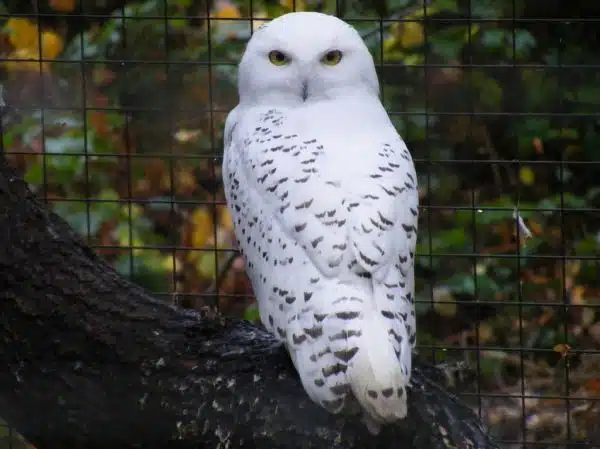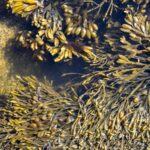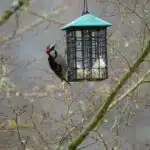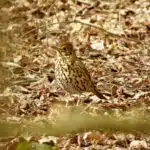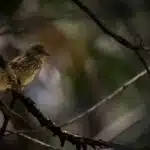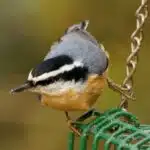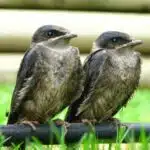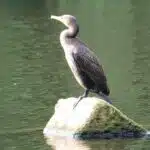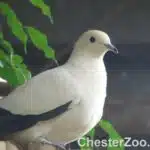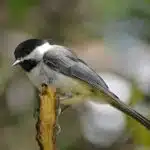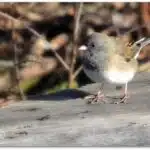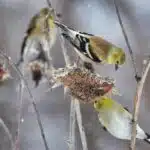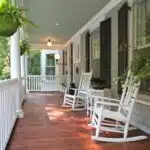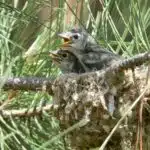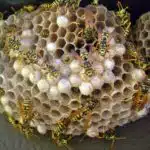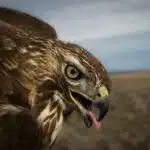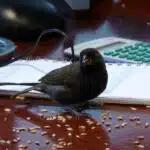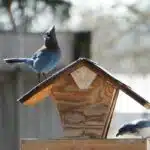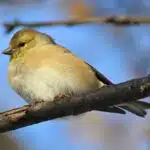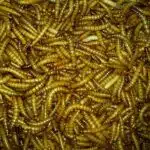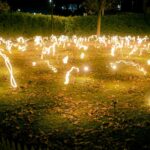Owls are fascinating creatures that have captivated human imagination for centuries. These nocturnal birds of prey are known for their exceptional hunting skills, distinctive hooting calls, and enigmatic eyes that seem to stare into one’s soul. While owls are commonly associated with wild forests and barren deserts, they can also be found in suburban and urban areas if the habitat conditions are suitable. As a wildlife conservationist or ornithologist, attracting owls to your yard is not only an exciting endeavor but also a valuable contribution to the conservation efforts of these magnificent birds.
Creating a welcoming environment for owls in your yard requires careful planning and implementation of specific strategies. Some of the essential factors that influence owl presence include food availability, nesting sites, water sources, and vegetation cover. By providing these resources in your yard, you can increase the chances of attracting different species of owls such as barn owls, screech owls, great horned owls, and more. Moreover, observing these majestic birds in their natural habitat can be a rewarding experience that fosters appreciation for wildlife conservation and promotes ecological awareness among all members of the community.
Understanding The Habits And Behaviors Of Owls
Like a silent predator, owls roam the night skies, their keen senses and adaptations allowing them to navigate through darkness with ease. Understanding owl communication and behavior is crucial in attracting these magnificent creatures to your yard. Owls are known for their nocturnal habits, which means that they hunt and communicate during the night. These birds of prey have exceptional hunting skills that allow them to swoop down on unsuspecting prey without making a sound.
Owls are not only skilled hunters but also great communicators. Their communication methods range from hoots, screeches, hisses, and bill snaps depending on the species. They use these sounds to attract mates or warn off potential threats. Understanding these vocalizations can help you identify the species of owl in your area and what they might be trying to communicate. Additionally, understanding their behavior can help you create a suitable environment in your yard that mimics their natural habitat.
Creating a suitable habitat for owls in your yard requires knowledge of their behavior patterns. Owls prefer undisturbed areas with large trees where they can roost and nest safely. They also need access to water sources like ponds or streams where they can hunt for fish or other aquatic creatures. In addition, providing food sources like rodents or insects can attract owls to your yard as well. By creating an environment that meets all these needs, you increase the chances of attracting these majestic birds to your yard and enjoying their presence at night!
Creating A Suitable Habitat For Owls In Your Yard
If you desire to attract owls to your yard, providing a suitable habitat is the primary step. Owls need a place to nest, roost, and hunt. To achieve this, make sure your yard has sufficient cover, such as trees or shrubs that will provide shade and protection from predators. Additionally, it’s crucial to minimize any disturbances in the area where the owls might be nesting.
Attracting owls is not only about providing shelter; predator control is also essential. Owls are natural predators and can help keep other pests in check. However, they require an environment free of human-made poisons and chemicals that may harm them or their prey. Be mindful of using pesticides or rodenticides as these can have unintended consequences on the food chain.
Prey availability is another critical factor when attracting owls to your yard. Providing adequate food sources for owls will ensure they remain in your vicinity and establish a territory. Consider planting native vegetation that attracts insects, rodents, or other small mammals that may serve as prey for owls. Remember that if there is no food source available in your yard, the owls are unlikely to stick around.
Providing adequate food sources for wild animals is critical when trying to attract them to your yard without disrupting their natural habitat too much. In the next section of this guide, we will discuss some simple steps you can take towards achieving this goal.
Providing Adequate Food Sources For Owls
As we discussed in the previous section, creating a suitable habitat for owls is essential to attract them to your yard. However, providing adequate food sources is equally crucial for their survival. Owls are predatory birds that rely on hunting small mammals, insects, and other birds to feed themselves and their young.
Feeding strategies of owls vary depending on the species and their prey selection. For example, some species like the barn owl hunt mostly rodents and small mammals, while others like the great horned owl prefer larger prey such as rabbits and squirrels. Owls typically hunt at night when their prey is active, using their keen senses of vision and hearing to locate them.
To attract owls to your yard, you can consider providing various food sources such as bird feeders or insect-attracting plants. However, it’s important to remember that feeding wild animals can have unintended consequences and should be done with caution. Instead of directly feeding owls, you can create an environment that supports a healthy ecosystem of prey animals that they naturally hunt.
Next, we will discuss installing nest boxes for owls in your yard. Nest boxes provide a safe place for owls to nest and raise their young. They mimic natural tree cavities that are often used by owls for nesting but may not be available in urban environments. Installing nest boxes can help increase the population of these amazing birds in your community while providing a safe home for them to thrive in.
Installing Nest Boxes For Owls
- The selection of appropriate nest boxes for owls is critical for successful installation and use by the target species.
- Nest boxes should be mounted at least four feet above the ground in a location that offers some protection from the elements.
- Nest boxes should be installed and monitored at a safe distance to minimize disturbance and ensure the safety of the owls.
- It is important to use the appropriate materials in the construction of the nest boxes to ensure the longevity and suitability of the structure.
- Regular monitoring of the nest boxes should be conducted to ensure the safety of the owls and to detect any potential problems.
- Nest box designs should be based on the species of owl being targeted, as the size and shape of the nest box can vary greatly between species.
Choosing Appropriate Nest Boxes
Attracting owls to your yard can be a fulfilling experience for any wildlife enthusiast. DIY nest boxes are an effective way to encourage owls to stay in your yard while allowing them to thrive in their natural habitat. When choosing appropriate nest boxes, it is important to consider the size and design of the box, as well as the materials used for its construction.
The ideal nest box should be large enough to accommodate the specific owl species you want to attract. It should also have a suitable entrance hole size and be designed with adequate ventilation and drainage. The use of natural materials such as wood, bark or straw can provide insulation and protection from extreme weather conditions.
When installing nest boxes for owls, it is essential that they are placed in appropriate locations, such as near open fields or meadows where prey is abundant. Additionally, proper maintenance is crucial in ensuring that the boxes remain functional and safe for the owls. Regular cleaning and monitoring of the box will not only help prevent pests from infesting it but also allow you to observe owl behavior up close.
Attracting owls to your yard through DIY nest boxes can be an enriching experience both for you and these magnificent creatures. By choosing appropriate nest boxes with natural materials like wood or straw and placing them in suitable locations along with regular maintenance, you can create a thriving habitat for owls in your own backyard.
Installing Nest Boxes
Providing a suitable habitat for owls in your yard can have numerous benefits, including pest control and pollination. One effective way to attract these birds is by installing nest boxes. Building DIY nest boxes is a cost-effective and rewarding way to encourage owls to reside in your area.
When installing nest boxes, it is important to choose appropriate locations that provide adequate prey and shelter for the birds. Boxes should be placed near open fields or meadows that are free of pesticides and other harmful chemicals. Additionally, boxes should be placed at least 10-20 feet above ground level and secured firmly to prevent them from falling.
Proper maintenance is key in ensuring that nest boxes remain functional and safe for the owls. Regular cleaning and monitoring will prevent pests from infesting the box while allowing you to observe owl behavior up close. By following these DIY nest box building tips and proper installation techniques, you can create an ideal habitat for owls in your backyard while also contributing to their conservation efforts.
Monitoring Nest Boxes
The installation of nest boxes can significantly contribute to the conservation efforts of owls in residential areas. However, it is not enough to just install these boxes as they require proper maintenance and monitoring to ensure their effectiveness. One critical aspect of this process is timing. It is crucial to place the boxes at the right time, preferably before breeding season, to attract owls looking for nesting sites.
Cleaning and maintenance are also vital in preserving the safety and functionality of nest boxes for owls. Nest boxes can become infested with pests like mites and rodents, which can harm or even kill the birds. Regularly cleaning the box after each breeding season or every six months is necessary to prevent such infestations. Furthermore, monitoring the box regularly will allow you to observe owl behavior up close while ensuring that it remains safe and habitable.
In conclusion, installing nest boxes is an effective way to create suitable habitats for owls in residential areas. However, maintaining these boxes through proper cleaning and monitoring is equally important in ensuring their long-term success. By placing them at the right time and conducting regular checks, homeowners can help conserve these magnificent birds while contributing to local pest control efforts and pollination needs.
Choosing The Right Location For Nest Boxes
When it comes to attracting owls to your yard, choosing the right location for nest boxes is crucial. One of the most important considerations is to select a spot that provides sufficient cover and protection from predators. This can be achieved by placing the nest box in a tree or on a post, but make sure it is at least 10 feet off the ground and away from any potential hazards such as power lines or branches that could damage the box.
Choosing suitable materials is also essential in building an owl nest box. The ideal material should be durable, weather-resistant, and provide good insulation properties. A wooden box with a sloping roof and ventilation holes will help regulate temperature and humidity levels inside the box. Avoid using treated wood or metal as they can overheat during summer months and become too cold during winter.
Proper placement considerations are important when installing owl nest boxes. It’s best to place them in areas with minimal human disturbance and noise pollution. If you live in an urban area, consider hanging them near parks or wooded areas that have natural sources of food such as insects or rodents which are staple diets for many species of owls.
Choosing the right location for owl nest boxes requires careful consideration of various factors such as proper placement, suitable materials, and environmental conditions. By following these guidelines, you can create a welcoming habitat for owls to thrive in your backyard. In the next section, we will discuss how providing water sources for owls can further enhance their habitat and increase their chances of nesting successfully.
Providing Water Sources For Owls
Hydration is an essential aspect of owl survival, and providing a water source in your yard can attract these creatures. Birds lose water through respiration, excretion, and evaporation from their skin and feathers. This loss creates a need for regular consumption of water to maintain their physiological processes. Hence, providing a reliable source of water ensures that owls have access to adequate hydration.
There are various types of water sources that you can provide in your yard to attract owls. A bird bath is one such option, which should be shallow enough for the owl to stand safely but deep enough to allow them to douse themselves with water fully. Another option is a small pool or pond that provides a more natural environment for the owl’s bathing needs while also attracting other wildlife species. Additionally, dripping water sources or misters help maintain humidity levels and provide drinking and bathing options for the owls.
Water sources are critical components in creating suitable habitats for owl populations. In addition to attracting them to your yard, they also increase the chances of observing these elusive creatures up close while they engage in their natural behaviors. By providing different types of water sources, you can cater to specific owl species’ preferences and ensure that they have access to adequate hydration throughout the year. In the subsequent section, we will discuss creating a safe environment for owls by implementing certain measures around your yard without disturbing their natural way of life.
Creating A Safe Environment For Owls
- Attracting owls to a yard requires an environment that is conducive to their needs.
- Planting native plants provides a source of food, shelter, and nesting materials for owls.
- Installing birdhouses in the yard can serve as an attractive living space for owls.
- Minimizing outdoor lights can reduce the disruption to owls’ sleep cycles and help them feel more secure in their habitat.
- Providing a safe environment for owls can also benefit other wildlife by providing a predator to help control the population of rodents and other small animals.
- Creating a safe environment for owls is an important part of preserving the local wildlife and can be done with relative ease.
Planting Native Plants
Picture a beautiful garden filled with vibrant colors and a variety of plants. Imagine hearing the gentle hoots of an owl coming from within the garden. One way to attract owls to your yard is by incorporating native plants into your landscaping. Native plants provide numerous benefits for both owls and other wildlife, making them an essential component of any bird-friendly landscape.
Planting native plants in your yard can serve as a source of food, shelter, and nesting material for owls. These plants are adapted to the local climate and soil conditions, making them more resilient and better able to support local wildlife. Best practices for planting native plants include choosing species that are appropriate for the soil type, sun exposure, and water availability in your area. Additionally, planting a variety of plants with different blooming periods can ensure a continuous supply of food throughout the year.
Incorporating native plants into your landscape not only supports owl populations but also helps to maintain biodiversity in the ecosystem. Native plant species provide important habitat for many other birds, insects, and mammals that may be struggling due to habitat loss or fragmentation. By creating a safe environment for owls through planting native species, we are also contributing to the overall health and sustainability of our local ecosystems.
Installing Birdhouses
Creating a safe environment for owls is crucial to maintaining healthy ecosystems. Aside from planting native plants, installing birdhouses can also serve as a helpful tool in attracting specific owl species. There are different types of birdhouses that cater to the needs of various owl species, including screech owls, barn owls, and barred owls. Installing birdhouses can provide shelter and nesting sites for these birds while also promoting their overall well-being.
When choosing a specific type of birdhouse to install in your yard, it is important to consider the habitat requirements of the target owl species. For instance, screech owls prefer birdhouses that are mounted on trees or poles at least 10 feet off the ground and near open fields or woodlands. Barn owls, on the other hand, require larger birdhouses with an entrance hole that faces away from prevailing winds and rain. Barred owls generally require larger boxes placed higher up in trees than screech owl boxes. By understanding the unique preferences of each species, you can effectively attract them to your landscape.
Installing birdhouses not only benefits specific owl species but also contributes to the overall health of local ecosystems by providing additional nesting sites. It is essential to follow proper installation guidelines when setting up birdhouses to ensure they are safe and secure for both birds and humans alike. By creating a welcoming environment for owls through the installation of appropriate birdhouses, we can help promote their conservation efforts while also enhancing our appreciation for nature’s beauty and diversity.
Minimizing Outdoor Lights
Creating a safe environment for owls is not limited to providing them with shelter and nesting sites. Other factors, such as minimizing outdoor lights, also play a crucial role in their conservation. Outdoor lights can disrupt the natural behavior of nocturnal animals, including owls. When exposed to artificial light, owls may become disoriented or confused, affecting their ability to hunt and avoid predators. As such, it is essential to minimize outdoor lights in areas where owls are present.
One effective way to minimize outdoor lights is by implementing dark sky principles. Dark sky refers to the practice of reducing light pollution by using lighting fixtures that direct light downwards instead of upwards or outwards. By doing so, the amount of light that enters the atmosphere is reduced, resulting in a darker sky at night. This can benefit not only owls but also other nocturnal animals and humans alike.
To minimize outdoor lights further, it is recommended to use lighting fixtures that emit warm-colored light instead of cool-colored light. Warm-colored light has less blue spectrum than cool-colored light and is less disruptive to nocturnal animals’ natural behavior. Additionally, motion-sensor lights can be used instead of continuously illuminated ones. Motion-sensor lights only activate when movement is detected, reducing overall energy consumption and minimizing the impact on wildlife.
Minimizing outdoor lights is an essential aspect of creating a safe environment for owls and promoting their conservation efforts. Implementing dark sky principles and using appropriate lighting fixtures can reduce light pollution and protect nocturnal animals’ natural behavior patterns. By taking these measures into consideration, we can help preserve the beauty and diversity of our ecosystem while serving as responsible stewards for future generations.
Choosing The Right Vegetation For Your Yard
Native plants play a vital role in attracting wildlife to your yard. For owls, it is essential to choose the right vegetation that provides them with food and shelter. Bird-friendly landscaping is an excellent way to create a habitat that supports not only owls but also other birds.
Here are some ideas for choosing the right vegetation for your yard:
- Choose native plants: Native plants provide food sources for owls, such as insects and small mammals. They also require less water and maintenance than non-native species.
- Create layers: By planting trees, shrubs, and ground covers, you can create different layers in your yard that provide habitat for various animals, including owls.
- Provide nesting boxes: Some owl species may use nesting boxes if there aren’t natural cavities available in trees or shrubs.
- Avoid using pesticides: Pesticides can harm not only the insects but also the animals that feed on them.
Bird-friendly landscaping benefits both humans and wildlife by creating a sustainable environment. By incorporating these ideas into your yard, you can attract not only owls but also other birds and beneficial insects. In the next section, we will discuss how minimizing light pollution in your yard can further support nocturnal wildlife like owls.
Minimizing Light Pollution In Your Yard
- Covering outdoor lights can be important in minimizing light pollution, as it prevents unwanted light from entering the night sky.
- Shielding light sources is also effective in reducing light pollution, as it directs the light away from the night sky and towards its intended target.
- Reducing night lighting is another important step in eliminating light pollution, as it reduces the amount of light entering the night sky and minimizes its impact on wildlife.
- When it comes to attracting owls, minimizing light pollution can be an important step, as it provides a more natural environment for them to thrive in.
- By shielding and reducing night lighting, the amount of light entering the night sky can be significantly reduced and thus create an ideal environment for owls to inhabit.
- Additionally, covering outdoor lights can help to ensure that the night sky is dark and that the owls will feel safe and comfortable in the environment.
Covering Outdoor Lights
Outdoor lights are essential for illuminating our yards at night, but they can also have a negative impact on nocturnal wildlife such as owls. Artificial light sources can disrupt a bird’s natural behavior, including their hunting and mating patterns. Covering outdoor lights is an effective way to minimize light pollution in your yard and create a more welcoming environment for owls.
As a wildlife conservationist, I recommend using opaque covers or shields to cover outdoor lights. These covers will prevent light from shining upwards into the sky or outwards into neighboring properties, reducing the amount of light pollution in the area. It is also important to ensure that outdoor lighting fixtures are properly aimed towards the ground and not pointed upwards.
Minimizing light pollution isn’t the only way to attract owls to your yard. Reducing noise pollution by keeping loud activities indoors during the night can also make your yard more appealing to these elusive birds of prey. With these simple steps, you can help preserve owl populations while creating a tranquil space for you and your family to enjoy.
Remember, it is our responsibility as humans to maintain healthy ecosystems for all animals to thrive in. By implementing these easy ideas, we can collectively improve our relationship with nature and make a positive impact on the world around us.
Shielding Light Sources
As wildlife conservationists and ornithologists, we must explore the effects of light pollution on nocturnal animals, particularly owls. With the increasing urbanization of our cities and towns, artificial light sources can disrupt the natural behavior of these birds of prey, including their hunting and mating patterns. Shielding outdoor lights is an effective way to minimize light pollution in your yard and create a more welcoming environment for owls.
Opaque covers or shields can be used to cover outdoor lights and prevent them from shining upwards into the sky or outwards into neighboring properties. This reduces the amount of light pollution in the area while ensuring that outdoor lighting fixtures are properly aimed towards the ground and not pointed upwards. Additionally, it is important to consider noise pollution by keeping loud activities indoors during the night to make your yard more appealing to these elusive birds of prey.
The impact of urbanization on owl populations is significant, but we have potential solutions available. By implementing simple steps such as reducing light and noise pollution in our yards, we can help preserve owl populations while creating a tranquil space for us and our families to enjoy. As individuals, it is our responsibility to maintain healthy ecosystems for all animals to thrive in. Let us collectively improve our relationship with nature and make a positive impact on the world around us by mitigating light pollution in our communities.
Reducing Night Lighting
As conservationists, it is imperative that we take measures to reduce light pollution in our yards. One effective way to do this is by reducing the amount of night lighting we use. By minimizing our reliance on outdoor lighting at night, we can significantly reduce the impact of light pollution on nocturnal animals and their ecosystems.
Reducing night lighting has numerous benefits for wildlife and ecosystems. For example, many nocturnal animals rely on darkness to hunt, mate, and navigate their environment. When artificial lights shine into their habitats, they can become disoriented or unable to carry out their natural behaviors. This disruption can have long-term consequences for populations of these animals, as well as for the larger ecosystem.
Fortunately, there are several steps we can take to reduce our reliance on night lighting. For example, we can install motion sensors that turn lights on only when someone enters an area, rather than leaving them on all night long. We can also use lower-wattage bulbs or switch to solar-powered lighting fixtures that don’t require electricity from the grid. By taking these simple steps to reduce light pollution in our yards, we can help protect nocturnal animals and preserve healthy ecosystems for generations to come.
Monitoring Owl Activity In Your Yard
Minimizing light pollution in your yard is crucial for attracting owls to your property. However, once you have reduced the amount of light, there are other steps you can take to invite these majestic birds into your yard. Using technology can help you monitor owl activity and contribute to conservation efforts for owl conservation.
One way to attract owls is by providing nesting sites. You can create nest boxes specifically designed for owls and place them in suitable locations around your yard. The size and design of the box will depend on the species of owl you are hoping to attract. Owls typically prefer higher elevations, so placing the boxes on poles or trees at least 10 feet off the ground is ideal.
Another way to invite owls into your yard is by providing food sources. While it may seem counterintuitive, providing a source of prey such as mice or rats can attract owls to your property. You can establish habitats that support native wildlife that serves as prey for owls, such as tall grasses or wildflowers. When using this method, make sure not to use poisons or traps which may harm both the prey animals and the predators.
Using technology like cameras with motion sensors can help you record owl sightings and behavior in real-time without disturbing them. Recording owl sightings also contributes greatly towards conservation efforts for owl conservation since it helps researchers understand their behavior patterns and potential threats they face in their natural habitat. By sharing this information with local conservation organizations or researchers, we can collectively work towards protecting these magnificent creatures from extinction.
Recording Owl Sightings And Behavior
Nighttime observations and recording vocalizations are essential methods for collecting data on owl behavior. Owls are known to be nocturnal creatures, which means that they are most active during the night. Therefore, it is advisable to conduct your observations at night for a more accurate sighting. When you spot an owl, record the time of day, the location, and the behavior of the owl. These details will help you understand their habitat preferences and feeding patterns.
Recording vocalizations is another way to study owl behavior. Owls have distinctive vocalizations that range from hoots and screeches to hisses and whistles. By listening to these sounds and recording them, you can identify different species of owls in your yard or nearby areas. This information will help you gain insight into their communication patterns and mating behaviors.
To make your nighttime observations and vocalization recordings more efficient, consider using technology such as night vision cameras or sound recorders. These tools will allow you to capture clear images or sounds without disturbing the owls’ natural habitat or behavior.
Tips for conducting nighttime observations:
Use a red light flashlight to avoid disrupting their natural vision.
Be patient as owls may take some time before they become visible.
Observe from a safe distance so as not to disturb their nesting sites.
Tips for recording vocalizations:
Learn about different owl calls before going out into the field.
Record several minutes of audio to capture all variations in calls.
Label each recording with date, time, location, weather conditions, and other relevant details.
Participating in citizen science projects for owl conservation is an excellent way to contribute important data on owl populations. Many organizations collect data through volunteer-based programs where citizens can submit sightings or upload audio recordings of owls they observe in their yards or local habitats. By participating in these programs, you’ll not only learn more about these magnificent creatures but also contribute to their conservation efforts.
Participating In Citizen Science Projects For Owl Conservation
As individuals who are passionate about wildlife conservation, we must recognize the importance of gathering data to inform our efforts. Participating in citizen science projects is a valuable way to contribute to owl conservation while learning more about these fascinating creatures. Citizen science opportunities allow us to collect data that can be used by researchers and conservationists to make informed decisions.
One such project is the NestWatch program, which aims to monitor nesting bird populations across North America. By participating in this project, you can help provide data on owl breeding success rates, which can inform conservation advocacy efforts. Additionally, the eBird program allows you to record your owl sightings and contribute them to a global database of bird observations. This database is used by scientists and researchers around the world to better understand bird populations and their behaviors.
Participating in citizen science projects not only helps us gather important data, but it also allows us to engage with our communities and educate others about owl conservation. By sharing our experiences with others, we can inspire them to take action and join us in our efforts. Conservation advocacy is critical for ensuring that our planet’s wildlife is protected for future generations.
Transitioning into educating your community about owl conservation: In addition to participating in citizen science projects, there are many other ways that we can advocate for owl conservation. One effective method is through education and outreach within our communities. By raising awareness about the importance of protecting owls and their habitats, we can inspire others to take action and join us in our efforts.
Educating Your Community About Owl Conservation
Community outreach and education programs are essential in promoting owl conservation. Educating the community about the importance of owls in the ecosystem and their declining population will help increase awareness and support for conservation efforts. This can be done through various means, such as workshops, seminars, and public talks.
One effective way to educate the community is by partnering with local schools and universities. By incorporating owl conservation into their curriculum, students can learn about the different species of owls, their habitat requirements, and threats to their survival. This creates a ripple effect, as students take what they have learned back to their families and communities.
Another approach is to organize community events that promote owl conservation. These events may include birdwatching tours or guided walks through owl habitats. By engaging with the community in this way, we can create a sense of responsibility towards protecting these magnificent birds and their habitats.
Transition: Now that we have educated our community about owl conservation through outreach programs and events, it’s time to take action by engaging in local conservation efforts for owls.
Engaging In Local Conservation Efforts For Owls
- Building owl boxes is a great way to provide a safe, sheltered environment for owls to make their home.
- Establishing nesting boxes in trees and other appropriate locations can help to increase the local owl populations.
- To ensure the long-term health of owl populations, local habitats should be preserved and protected through efforts such as reducing the use of pesticides and other chemicals.
- Additionally, leaving dead trees, standing snags, and leaf litter can provide food and cover, creating a more welcoming environment for owls.
Building Owl Boxes
When it comes to engaging in local conservation efforts for owls, building owl boxes can be an effective strategy. DIY owl boxes are a great way to provide shelter and nesting sites for owls in your yard. These boxes can be built using simple materials such as wood and screws, and they can be placed on trees or poles. Building multiple owl boxes around your yard can increase the chances of attracting more owls.
If you’re not handy with tools, purchasing owl boxes is another option. There are many pre-made owl boxes available for purchase online or at local wildlife stores. When choosing a box, make sure it is appropriate for the species of owl you are hoping to attract. Some species prefer larger boxes while others prefer smaller ones. It’s also important to place the box in a suitable location, such as high up in a tree and away from potential predators.
Overall, building or purchasing owl boxes is an easy way to attract owls to your yard while also contributing to local conservation efforts. By providing these majestic birds with a safe and comfortable home, you’re helping to ensure their survival for future generations.
Local Habitat Preservation
Preserving biodiversity and maintaining ecological balance are crucial aspects of wildlife conservation. Local habitat preservation plays a vital role in the survival of many species, including owls. Engaging in local conservation efforts for owls involves not only providing them with shelter but also preserving their natural habitat.
One way to preserve local owl habitats is by reducing the use of pesticides and chemicals that can harm their food sources, such as rodents and insects. Planting native vegetation and leaving fallen trees and brush piles can also create suitable habitats for owls to nest and hunt. Additionally, reducing light pollution from outdoor lighting can minimize disturbance to nocturnal species like owls.
Conserving local owl habitats requires a collaborative effort between individuals, communities, and government agencies. By preserving natural habitats through sustainable practices, we can ensure the survival of these majestic birds for generations to come while contributing to broader conservation efforts that benefit all wildlife.
Enjoying The Beauty And Fascination Of Owls In Your Yard
As the ancient adage goes, “birds of a feather flock together.” By understanding owl behavior, we can create an environment in our yards that will attract these fascinating creatures to take up residence. Different species of owls will require different types of habitats and food sources, so it is important to research and tailor your efforts accordingly.
One key factor in attracting owls is providing suitable nesting sites. Many owl species utilize tree cavities or abandoned nests made by other birds, but some may prefer nest boxes specifically designed for their needs. Providing a variety of perches and roosting sites around your yard can also make it more appealing to visiting owls.
In addition to habitat, food sources are another important consideration. Owls primarily feed on small mammals, such as rodents and rabbits, but may also hunt insects or fish. Planting native vegetation that attracts prey species can help attract owls as well. By taking these steps to create a welcoming environment for owls in our yards, we not only get to enjoy their beauty and fascination but also play a role in conserving these amazing birds.
Conclusion
Owls are fascinating birds that have been admired by humans for centuries, and attracting them to your yard can be a rewarding experience. Understanding their habits and behaviors is crucial to creating a suitable habitat for them in your yard. Providing adequate food sources and installing nest boxes are also essential steps in attracting owls.
Choosing the right location for nest boxes is critical, as they need to be placed in areas where the owls feel safe and secure. Participating in citizen science projects for owl conservation, educating your community about owl conservation, and engaging in local conservation efforts are all important ways to help protect these magnificent birds.
While some may argue that attracting owls to your yard could lead to an increase in rodent populations, it’s important to remember that these birds play an important role in controlling pest populations naturally. By taking the necessary steps to attract owls to your yard, you can enjoy their beauty and fascination while also helping to protect and conserve these important species.
Image Credits
- “Snowy owl (female)” by Marie Hale (featured)

